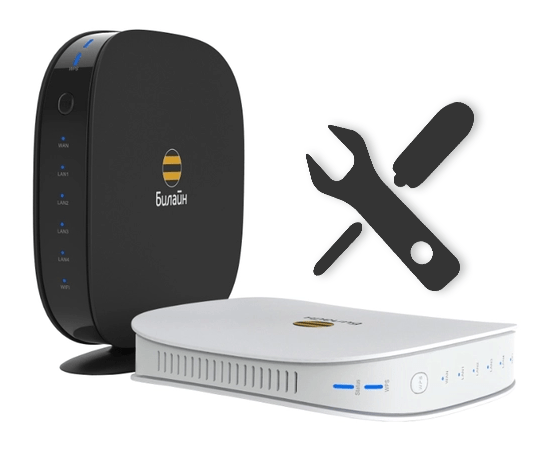How to start your own clothing business

If you have been thinking (or dreaming) of starting your own line, now is the time to learn how to start an online clothing business. Research shows that the clothing industry is booming year after year.
According to Statista, the e-commerce retail industry is valued at $102.5 billion and will grow to $153.6 billion by 2024.
Building a business from scratch can seem like a difficult and expensive undertaking, and to be honest, this is true to some extent, but if you are ready to stick to this instruction and put in 100%, then the reward will not make you wait for yourself.

1. Determine the need in the market
You may already have ideas about what you want to sell. That’s great, but take your time.
One of the biggest reasons new business owners fail is because no one really wants what they’re trying to sell.
And it would be a real tragedy if you went through the whole process of learning how to start your own clothing brand, but never achieved the success you hoped for.
That’s why market research at this stage is your best friend. There are many free and paid resources where you can make sure that your clothes are in demand in the market.
There are two types of market research:
- primary market research
- and secondary research.
Here are some basic market research ideas:
• Search for specific products on Google Trends and see what’s popular or growing.
• Dive into Facebook Analytics to learn about likes, interests and behaviors of people who may be your future customers or your target audience (more on this soon)
• Do a little research on other clothing brand competitors to find out what people like and don’t like (pay special attention to negative comments) — that’s where you can find a solution to their problems!)
2. Define your target audience
Identifying a need and identifying a target audience go hand in hand because that is the specific group or groups of people who need your products. And these groups are your target audience. These are the people you will try to connect with every day.
The better you understand these people, the better your chances of attracting and retaining them as customers.
If you want to learn how to start a truly successful online clothing store, you will have a deep understanding of your target audience. Do research until you understand both the demographics and psychographics of your target audience:
• Demographics: Age, gender, income, marital status, geographic location, etc.
• Psychographics: likes and dislikes, hobbies, interests, lifestyle traits, purchasing behavior, etc.
3. Design a business plan

A good business plan says:
• Who are you as a company, including your team, company mission, and what you sell
• What are you trying to achieve, including specific, actionable and measurable business goals.
• Why do you think the company will be successful (this is where you need to do market research)
• How do you plan to achieve your business goals based on to concrete steps and strategies
Ideally, your business plan covers the first five years of your business. Of course, not everything always goes as planned, but you need to work on something. More importantly, you need something to compare your progress with to better understand if you are on track to achieve your goals or if you need to make changes to your original plan.
In addition, your business plan is what you will show potential investors and partners (step 10 in this article).
If your plan is thoughtful, strategic, specific and promising, you are much more likely to attract people who will support your business and help it grow.
4. Start designing
Unleash your creative juices and create your masterpieces. Here are a few things to consider when designing your clothing line:
• Keep a sketchbook with you at all times. You never know when creativity will show up, so be always ready to jot down new ideas and inspiration.
• Don’t compromise on materials and overall product quality. Especially if you are creating a luxury line or boutique, your customers will know if you are saving money.
• Creating your own sample is a great idea. A thorough understanding of the process will help you run your business more smoothly, especially when negotiating costs with the manufacturer.
But don’t get hung up on the technical side of things and don’t sacrifice your creativity and ability to create new products.
• Start building your “techpack” as early as possible. This is the basic information you will pass on to your manufacturer when it comes time for them to create your clothing line.
Your tech package should include technical specifications and product details such as dimensions, materials and accessories.
5. Find a clothing manufacturer
Finding the right manufacturer is essential on your journey to starting your own clothing brand. That’s why you should spend time researching and carefully checking your options before making a decision.
Here are some tips for finding a clothing manufacturer:
Consider if you need a domestic or foreign manufacturer
You can save money with a foreign manufacturer, but find that it doesn’t justify potential downsides in the long run, such as longer delivery times or lower product quality .
Get creative with your search
Do a good old Google search and browse social networking sites like Facebook groups. You can also find industry meetings, directories, or networking opportunities.
Once you’ve compiled a list of manufacturers, research them carefully, asking lots of questions, and noting their response times. Check online to see if they have good or bad reviews from other clothing brands.
6. Create your brand
It’s time to develop creative materials that represent your brand: things like your brand name, logo, graphics and illustrations, product photography, and color palette.
Branding and design work can seem intimidating. If you don’t have the design skills or the budget to hire a professional developer, there are plenty of free resources for beginners to help you keep things accessible.
Tools Shopify has the following components:
• Generator
• Company Name Generator
• Domain Name Generator
• Slogan Maker
• Create Online Video
7. Choose a price for your products
In order to choose the right price, you need to have a good understanding of how much it costs you to produce your products, also known as cost of goods sold (COGS). COGS includes things like the cost of materials, labor, and production.
Don’t forget to take into account the overheads of store, warehouse, shipping, and employee payroll.
One one of the common pricing methods is the trapezoid markup, where you simply double the price. So, if it costs $10 to make a blouse, then you can sell it in your store for $25. Or you can sell to wholesalers for $25 and sell on your online store for $20.
Whatever price you choose, make sure you also consider how much your target audience will be willing to pay. It may take some experimentation to find the perfect price.
8. Start the marketing process.
Marketing is an important part of learning how to run an online clothing business. After all, no one will buy from your store if they don’t know it exists, right?
Ideally, you should start setting up your marketing before your store launches.
Facebook has incredible targeting capabilities to help you reach the right people.
If you have a limited advertising budget, you can start with the usual social media marketing strategies that focus on creating great content.

Influencer marketing is a great idea for a small budget: offer free products in exchange for reviews from social media users with a strong follower base.
You too you can giveaway to build your email list before your store goes live and then use email marketing to build relationships with them after launch.
9. Set realistic sales and distribution goals
There’s an old saying, “Rome wasn’t built in a day.” The same goes for anyone who masters the art of starting a clothing business. In the early stages of your company’s development, you have a lot to learn. Lots of trial and error. Lots of testing, tuning and more testing. Make sure you’re easy on yourself by setting realistic goals. Saying that you will make a million dollars in the first year is unrealistic (although it is possible!).
A more realistic goal could be to grow your income by 20% quarterly during your first year of employment. This growth-focused goal helps ensure that you don’t pick arbitrary financial targets that are simply unattainable.
Same with distribution if you’re thinking about launching a fashion line that sells elsewhere. stores. Start by looking for a few strong distributors in the first year and then gradually increase their number.
10. Start a soft launch, then look for more investments and partnerships.
Now that you’ve set up a presence and built up some anticipation, you can release your masterpiece to the world. This should only happen when you can hit all the marketing campaigns you’ve been working on. Keep working and developing them – like everything else on the road to starting an online clothing company, you will need to keep experimenting and building as you go.
Try pitching your clothing line to retailers who already stock items your target audience. Depending on the size of the company, you may need to reach out to several people before you can set up a meeting.
It’s the same with finding investment partners. Polish your business plan. And of course, make sure you offer them a great incentive to choose you. Will they get a partial ownership of your company or a certain percentage of your income once you successfully grow?
Is it worth starting a clothing business?
Yes. By now, you should have a solid idea of what it takes to learn how to start an online clothing manufacturing business. The most important thing to remember is that you won’t become a millionaire overnight. You will need to constantly try new things, monitor your progress and tweak what doesn’t work.
Business for the Poor: Business Ideas Without Investment
How to create and make money on advertising banners?
Free promotion Tik Tok: likes, subscribers, views, comments, reposts without tasks (mutual PR)
How to edit a profile on Instagram?
Earnings on the Internet on rates






